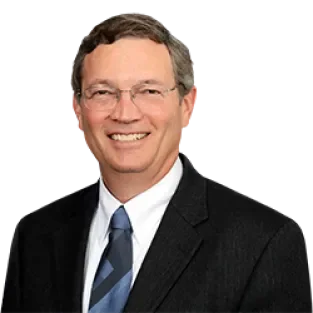ASAP
Littler's Maury Baskin Calls for Withdrawal of OSHA's Letter of Interpretation Permitting Union Organizers to Accompany Safety Inspectors into Non-Union Facilities
During a House Subcommittee hearing on the Occupational Safety and Health Administration’s (OSHA) recent sub-regulatory actions, Littler Shareholder Maury Baskin urged lawmakers to call upon the agency to withdraw its recent Letter of Interpretation (LOI) that allows union agents and community organizers to accompany safety inspectors into non-union worksites. Testifying on behalf of the National Association of Manufacturers and the Associated Builders and Contractors, Baskin explained that the LOI, issued on February 21, 2013, contradicts the plain language of the Occupational Safety and Health (OSH) Act and the National Labor Relations Act (NLRA), violates the Administrative Procedure Act (APA), and is simply “bad policy.”
Opening the hearing, Subcommittee Chairman Tim Walberg (R-MI) criticized what he believes is an increasing use of executive power to “circumvent the public rulemaking process in order to significantly change health and safety standards.” Walberg noted that the APA, which governs OSHA’s regulatory process, requires the agency to first issue a proposed rule, and collect and respond to public feedback, before issuing a final rule. He explained that OSHA is also required to determine that a health and safety risk exists, examine the economic impact of a proposed rule, and assess the feasibility of compliance. Both Walberg and Baskin explained that OSHA’s new LOI “dramatically” alters long-standing policies regarding non-union participation in safety inspections without necessary public input, and urged the administration to “reverse course.”
According to Baskin, OSHA declared this policy shift after more than 40 years of the OSH Act’s history and a million worksite inspections. This change marks the first time non-union employers could be compelled to invite outside members into their workplaces absent a showing that the individual represents a majority of the employees. Neither the OSH Act, NLRA, statutory regulations, nor the OSHA field manual imposes this requirement, Baskin testified.
Baskin clarified that “for decades” OSHA has permitted a safety inspector to be accompanied by a labor union “only where such a union has been certified or recognized as representing the employees of the employer under procedures established by the National Labor Relations Board.” Under the new policy, “an unspecified (non-majority) number of employees in the non-union workplace may designate an outside union or community organization as their representative for safety inspection purposes, even though a majority of the workers have failed to authorize the union as their representative for any purpose.”
In addition to “ignoring the APA” and causing conflict between the OSH Act and the NLRA, OSHA’s sub-regulatory move is “bad policy” for a number of reasons, Baskin said. By allowing union agents and community organizers onto private property, “OSHA is injecting itself into labor management disputes and casting doubt on its status as a neutral enforcer of the law.” OSHA should not be taking sides in promoting union organizing agendas, nor should the agency “run roughshod” over the rights of employers and the rights of the majority of employees who did not chose to have the outside agent represent their interests. According to Baskin, the NLRA has “struck a careful balance between labor management and employee rights,” and the new OSHA policy “ignores the majority rights of non-union employees.”
Moreover, Baskin noted, the purpose of the safety inspection is just that – safety. Allowing an outside party with no proven safety expertise into the workplace could distract the inspector from his or her focus.
Chairman Walberg asked Baskin how the conflict between the NLRA and OSHA’s new policy impacts employers. Baskin explained that “there is no way for employers to navigate” this conflict, they are simply being told their rights under the NLRA, and their rights to private property “are lost.” Employers are left with no administrative remedy, and are subject to harassment and potential premises liability issues.
A panelist testifying on behalf of the U.S. Chamber of Commerce echoed Baskin’s concerns about the LOI, and mentioned other OSHA initiatives in recent years that the agency has pushed without following the normal rulemaking procedures or justifying its actions with economic or safety analyses.
Among such sub-regulatory actions was an attempt to apply a new interpretation of “feasibly administrative or engineering controls” as used in the agency’s General Industry and Construction Occupational Noise Exposure standards. OSHA did not perform an economic analysis of this policy change’s impact on employers. As a result of the subsequent outcry, the proposal was withdrawn months later.
In March 2012, OSHA issued a memo to regional administrators and whistleblower program managers directing them to watch out for workplace policies and practices, including employer safety initiatives that could discourage employees from reporting workplace injuries. The memo lists four scenarios that would constitute violations of protections for whistleblowers, including a safety incentive program that rewards employees based on maintaining a low rate of injuries or fatalities. The problem with this policy, according to the witness, is that employer incentive programs “are not mentioned anywhere in the statute, regulations, or any place giving OSHA authority to impose this restriction. Despite this utter lack of authority and context, OSHA created a consequence for employers who maintain these programs.”
Similarly, on December 27, 2013, OSHA issued a memo to regional administrators discussing how to enforce combustible dust requirements. The memo, however, does not include a definition of “combustible dust.” Instead, the memo “relies on various outside standards and protocols such as those from the American Society for Testing and Materials (ASTM) and the National Fire Protection Association (NFPA).” In effect, the panelist explained, the enforcement guidance “codifies concepts without regulation.”
Finally, in October of 2013, OSHA posted on its website Annotated Permissible Exposure Limits (PEL) tables “which will enable employers to voluntarily adopt newer, more protective workplace exposure limits.” These tables provide side-by-side comparisons of various PELs. In doing so, the agency is “openly dismissive of its own standards,” creates uncertainty and confusion for employers, and undermines the credibility of the agency.
A complete list of panelists and links to their testimony can be found here.

